 The case of the Canarian Chilli
The case of the Canarian Chilli
I recently came across some hot sauces that piqued my interest. The sauces are exceptionally tasty, but what really got my interest levels up was they were created using influences from the Canary Islands and Andalusia in Spain. “What?” I asked myself, “I thought the Spanish don’t particularly like spicy food?”. So, how is it that these great tasting sauces were created using these influences?” It just didn’t seem to add up. So, to solve this mystery, I put on my detective’s hat. Chief Inspector Morich was on the case.
So, to solve this mystery, I put on my detective’s hat. Chief Inspector Morich was on the case.
I decided the first step was to work out how Chillies had become part of Canarian cuisine. It was intriguing that this group of islands, so far removed from where spicy food is usually eaten, had developed a taste for Chillies
At first, there was not much to go on, until I found a link between the Canary Islands and Christopher Columbus. This was important, because Christopher Columbus was responsible for introducing Chillies to the Old World. Before he brought Chillies back to Europe (from the West Indies), they were not known there at all.
The link was that Christopher Columbus used to replenish his fleets in the Canary Islands when he went on his discovery voyages. Bearing in mind that the Canary Islands had been a colony of Spain, I was convinced this bit of information could help me solve the puzzle.
The first obstacle
Sea routes
However, putting the pieces together proved more difficult than first met the eye. The difficulty I had connecting the dots was in the routes Colombus took in travelling back from his voyages from the West Indies and South and Central America. He might have replenished his ships in the Canary Islands on his outward bound voyages, but did not return to them on his way back. Had Christopher Colombus made the return journeys via the Canaries, the link would have been more obvious. He, or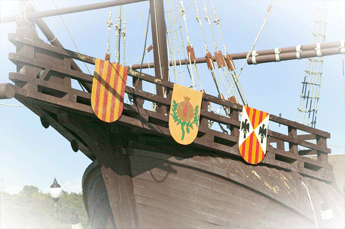 his crewmen could have introduced their new spice to the Canarians.
his crewmen could have introduced their new spice to the Canarians.
However, this was not the case. Colombus might have brought Chillies back with him, but they would not have passed through the Canary islands before arriving in Spain. There had to be another link.
And then something struck me. The first European port Christopher Columbus arrived at after his trip to the West Indies was Lisbon in Portugal. Was this not the link that perhaps tied Chillies to the Islands? After all, the Portuguese, rather than the Spanish, had been most instrumental in introducing Chillies to the world outside the West Indies and the Americas. Had a couple of seeds perhaps found their way off one of Colombus’s ships into Portuguese hands? (see note). Was it impossible, after this, that someone might have brought some Chilli seeds to the Canaries? After all, many people from Portugal settled in the Canary Islands.
The Portuguese
Mohle or mojo?
This of course was speculation of the highest order. It is not entirely known how the Portuguese got their first Chilli seeds. One thing, however, is known for sure. Once the Portuguese got Chilli seeds, they began growing them in their colonies, including Brazil, the Azores, Mozambique, Angola and Portuguese Macau . Shortly after beginning growing Chillies, they began distributing them around the world as part of trade. As a result, it is almost certain that seeds from one of these colonies found their way to the Canary Islands. If the Portuguese had grown Chillies in other parts of the world, they would have almost certainly grown them in the Canary islands.
And then I made an important link between the Portuguese and Chillies in the Canary Islands. I discovered that Mojo (a popular Chilli sauce from the Canary Islands) was named after the Portuguese word for sauce – Mohlo. I was now convinced that I had made a strong link between Chillies, Portugal and the Canaries. However, it wasn’t enough to prove my case. Some more work was needed. To do this, I decided to continue my investigation in Portugal itself. What I found brought the pieces of the puzzle even closer together
Portugal, like Spain, is also a country that doesn’t like spicy food. However, you rarely find a restaurant in Portugal that doesn’t have a bottle of Piri-Piri sauce tucked away somewhere. Piri-Piri Chicken is also one of the country’s most popular dishes. So how is that a country known not to like spicy food has a national dish with Chillies as an ingredient?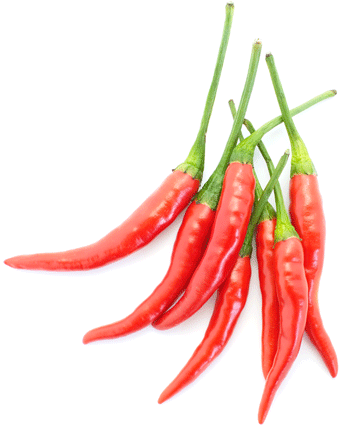
The answer lies in the Portuguese colonies. Inhabitants of the Portuguese colonies in Africa had developed a style of cooking that fused local tastes with Portuguese cooking. Much of this fusion cuisine contained the Chillies that the Portuguese had introduced to their colonies. In the case of Brazil, it is even possible that the Portuguese found that Chillies were already there. After all, Chillies have their origin in South America. The important point here, though, is that the Portuguese inhabitants of these colonies would have developed a taste for spicy food. They would have introduced these dishes to their fellow countrymen back in Portugal. They too would have become fans. It could have been these fellow countrymen who carried these recipes (and perhaps the Chillies) to the Canaries when they travelled through the Canaries or settled there.
Armed with information I had uncovered, the time had come to go back to the Canary Islands to find out if I could strengthen my case. I decided to dig into the history of the Canary Islands. Maybe I could find more connections link that unravel the mystery
Some history

Where are the Canary Islands?
The Canary Islands are an archipelago and are located sixty-two miles west of Morocco. The archipelago consists of islands (among others) like Fuerteventura, Lanzarote and Chinijo, La Gomera, Tenerife and Gran Canaria. Spain colonised the Canary Islands between 1483 and 1492, after a protracted battle with the Portuguese over sovereignty. They used their colony as a replenishment station for Spanish fleets on voyages to the Americas and elsewhere.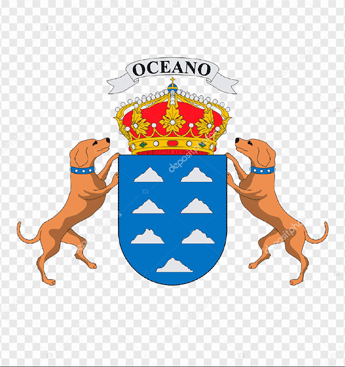
The Canaries and Andalusia were linked by being part of a sea route. Most Spanish ships sailed to the Americas from ports in Andalusia. It was the gateway to the new world. Many sailors from Andalusia would have passed through the Canary Islands as crewmen. Replenishment of ships took a couple of weeks. The crew of these ships would likely have been introduced to local cuisine while onshore. This cuisine would undoubtedly have contained Chillies. It might have been at this time that Spanish sailors developed a taste for spicy food (if they had not already developed this taste in Spain).
Canarian dishes and sauces like Papas Arugadas, with Mojo Picon (wrinkled potatoes with a Chilli sauce), Almogrote (a spicy cheese dip from La Gomera), Lapas a la plancha con mojo (grilled limpets with Mojo sauce) and Conejo al Salmorejo (rabbit marinated in a Canarian marinade) are examples of dishes where Chillies are used as an ingredient. It could have been these types of dishes that the Andalusian sailors would have tried and come to love
What’s more, many Andalusians settled in the Canary Islands after retiring from the ships. They would have developed a taste for local cuisine made with Chillies. It is possible they would have introduced this cuisine to their fellow countrymen when they visited their home country. It would have been easy to visit. Ships travelled between Spain and the Canary Islands all the time
And so, I realised that a more significant segment of Spain likes their Chillies than I had previously thought. A larger part than I had known about anyway. I knew that in the Basque country you find the Espelette and Guindilla de Ibarrahas Chillies. These are iconic Spanish Chillies closely linked with the region. I was also aware that the Padron and Nora Chillies are popular. Apart from these Chillies, I didn’t have the foggiest idea that Chillies might be more popular in Spain than I might have thought. The Canary Islands had opened my mind to something new, but now the time had come to investigate the Andalusian connection in more depth
The Adalusian link
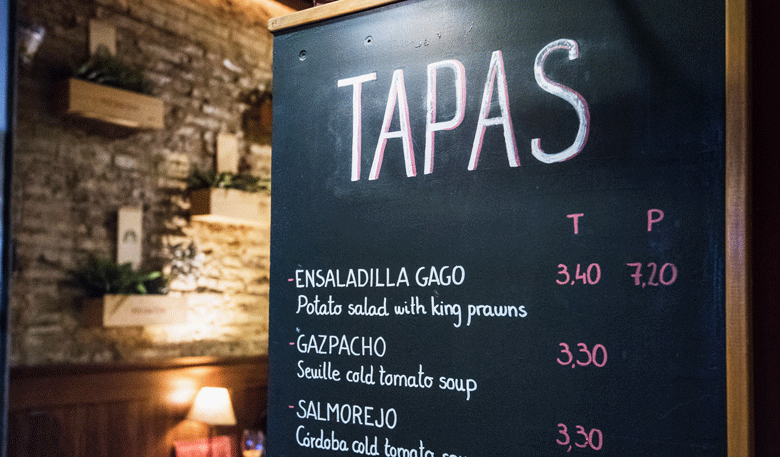
Gambas Pil Pil
I was getting closer, but something needed looking into. This had to do with the proximity of Portugal and Spain. The country’s border each other. Considering the distance between Seville, the capital of Andalusia, and Portugal is only 197 miles, was it possible that cooking with Chillies found their way into Spanish cuisine by more than one route? Had Andalusian cooking with Chillies been influenced by Portuguese cuisine?
To answer this, I dug a little deeper and discovered that one of Andalusia’s favourite dishes is Gambas al Ajillo or Gambas Pil Pil. These are prawns that have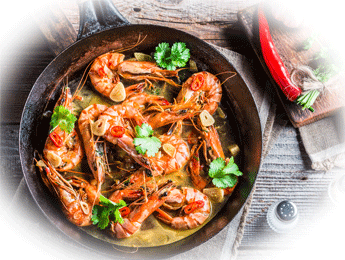 been sizzled in garlic/Chilli oil. The connection was now becoming more evident. The association of this dish with Piri- Piri prawns from Mozambique made the Portuguese connection even more apparent. The link was just too convincing to be a coincidence.
been sizzled in garlic/Chilli oil. The connection was now becoming more evident. The association of this dish with Piri- Piri prawns from Mozambique made the Portuguese connection even more apparent. The link was just too convincing to be a coincidence.
My thinking then went to where the Spanish had travelled in their voyages of discovery. Many of these voyages would have started in Andalusia before replenishment in the Canaries and then on to the Americas. This led me all the way to Mexico and the Aztecs.
Mexico is a part of the world where Chillies have been eaten for thousands of years. The Aztecs who ruled Mexico before the Spanish invasion in 1521 used Chillies in their everyday cooking. It is also a country that the Spanish colonised and ruled for well over two hundred and fifty years. There had to be a connection. What a link it turned to be!
Many Andalusians and Canarios (as the people from the Canaries call themselves) settled in Mexico after the Spanish invaded the country. As often happens when countries find themselves with a mix of cultures, cuisines start getting fused. Parts of Aztec cuisine would have found their way into Spanish cooking, and vice versa.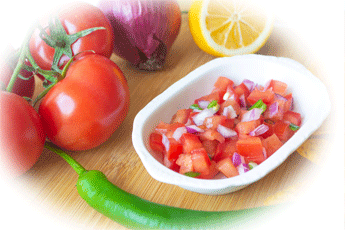
And that is where Salsas enter the equation. Salsas like Salsa de Chili Verde, salsa Bravo, Salsa de Tomate, Salsa Romesco and Salsas Picante de Chili Colorado are now very much a part of Spanish cuisine. However, this was not always the case. It was through the influence of Aztec cuisine on Spanish cooking that Salsas appeared on Spanish menus. They are now considered as much a part of Spanish as Mexican cuisine.
If Salsas had made their way back to Spain, via Mexico, they would certainly have arrived in the Canaries at some point. . Recipes for Salsa from Mexico would have been carried, with Canarios returning home to visit. These recipes would have become fused with local cuisine to create the Canarian food we know today.
Time for a verdict
I believed I had collected enough to reach a conclusion with all these links and connections. The time had come for Chief Inspector Moriche to present his case to the jury. While there is a lot of compelling evidence, the jury still has to reach a verdict. However, I think the truth lies somewhere in what I have uncovered. Maybe all or just pieces need to be considered to arrive at a factual finding, but we will have to wait for that. The jury is still out on this one
Note
Some sources quote that Chillies were only brought back to Spain in 1493 (Colombus’s 2nd voyage), by Diego Álvarez Chanca, a physician on one of Colombus’s ships. I personally find it hard to believe that Colombus would not have brought back some Chillies after his first voyage. They were after all a novelty and something he would have wanted to show his sponsors



